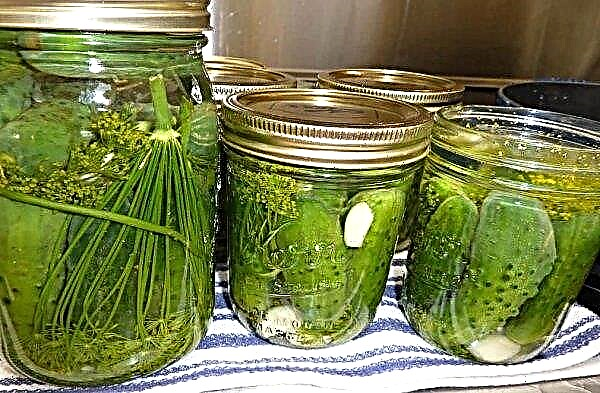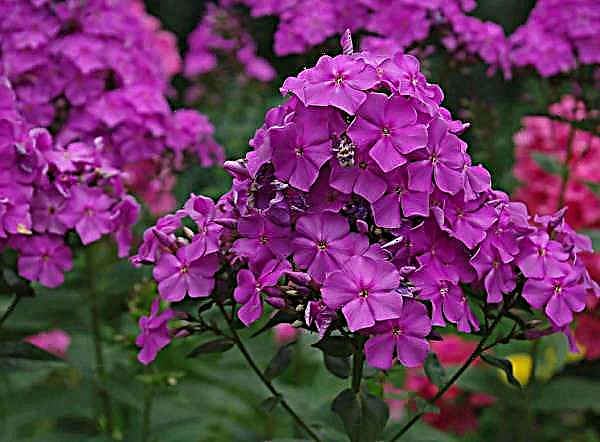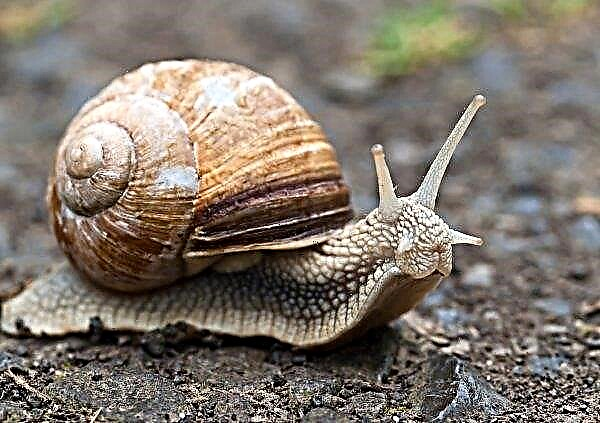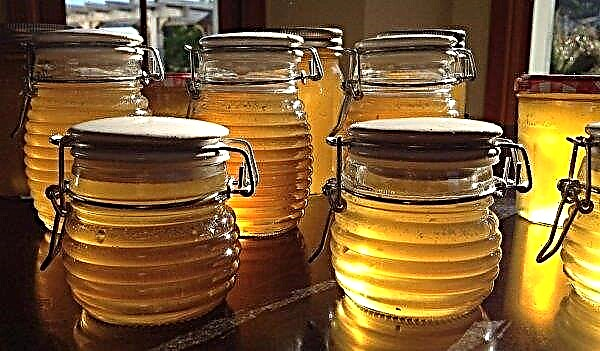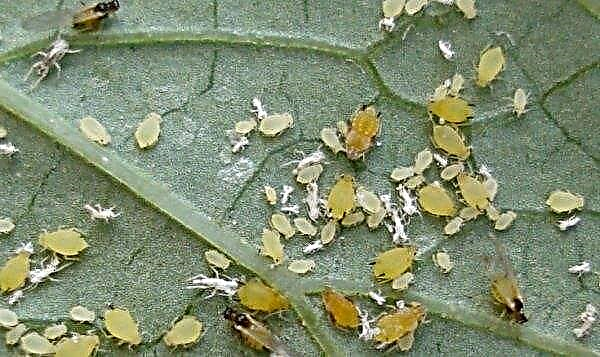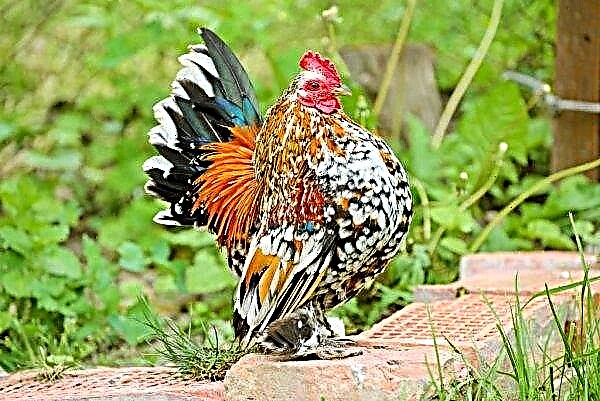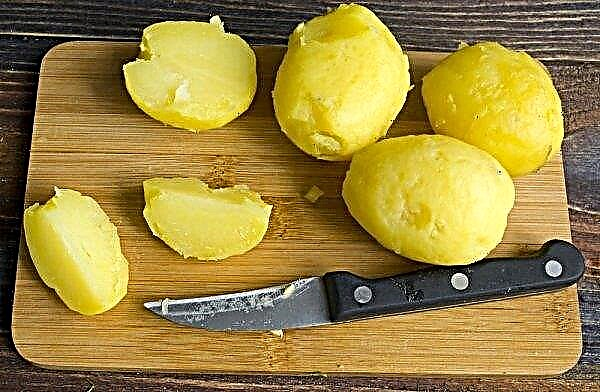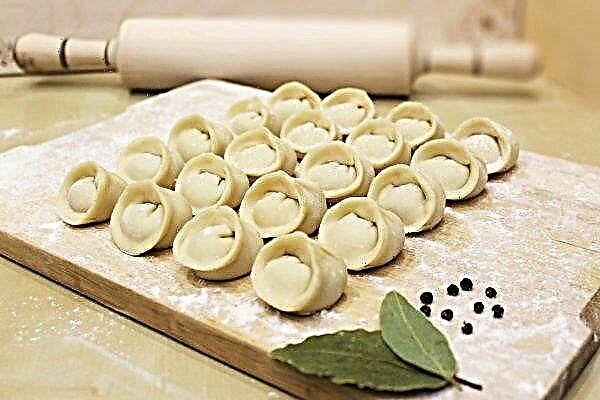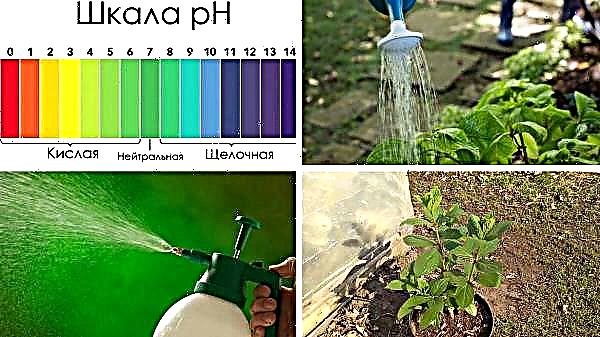The beautiful lilac flower browllia became popular in Europe as far back as the 19th century. Knowing the intricacies of caring for him will help you enjoy the magnificent flower from year to year.
Botanical description of the plant
In our area, this plant is not common. And in vain, because it can be used not only as a room, but also for the decoration of balconies, verandas and gardens.
Browallia (Browallia) - a member of the solanaceous family, the closest relative of tomato and potato. His homeland is considered South and Central America. In Europe, the flower came in 1846 from Colombia.
Did you know? Karl Linney named this plant in honor of his comrade, Bishop D. Browal.
Growing in the wild, browllia grows up to 100 cm in height and belongs to the shrubs. Decorative options are an order of magnitude lower (about 30 cm) and look like small shrubs with gentle drooping shoots. The flowers are odorless and are on the stem from spring to autumn. Tall species are cultivated in unprotected soil to decorate the site or further cut. The stunted balconies are decorated and grown as houseplants.
Tall species are cultivated in unprotected soil to decorate the site or further cut. The stunted balconies are decorated and grown as houseplants.
To increase decorativeness, browllia is planted in groups or several scions are planted in one container.
| Root system | Not powerful, growing deeper |
| Stem | Erect, Creeping and Curly |
| Leaf shape | Classical, oval-pointed |
| Leaf color | Saturated green |
| Flower shape | Sprocket, funnel-shaped petals |
| Flower color | Various: from dazzling white to blue and purple |
| Fruit shape | Box with lid and sashes |
| Fruit color | Dark |
| Fruit flavor | Poisonous |
Popular views
In nature, there are 6 varieties of browllium, but only two are grown indoors. Breeders worked on the modernization of the culture and created hybrid forms that differ in the duration of flowering, the shape and color of the flowers, as well as in size.
Did you know? Sticky and large-flowered browlls were previously considered independent species. Today, these species are combined into one - the American browlia. Some sources describe them as separate cultures.
The main types of browllia:
- Beautiful, or pleasant. A small bush growing in the natural environment up to 70 cm in height, at home up to 30-40 cm. A branched culture with short bare stems. The leaves are medium, 6 cm, covered with fluff. It blooms profusely with flowers measuring 5 cm. Shades - lilac, snow-white, blue, dark cherry, purple.
- Sticky. Low shrub up to 30 cm. Branches are sticky, covered with lush green foliage. The flowers are solitary, small, bright blue or white.
- American coated (or hairy). It is similar to the previous variety, but does not have viscous stems. The flowers are small, about 2 cm, light blue, white or purple. It blooms profusely.
- Marine Bell. A low bush up to 35 cm high. It is distinguished by strongly branching shoots. It blooms profusely in single or cystic inflorescences. The color of the flowers is dark blue. It is characterized by frost resistance.
- Blue Bell A small 35 cm bush in the shape of a ball. It blooms in small, three-centimeter racemose inflorescences of a blue hue. It is resistant to cold.
- Sapphire. A small bush 25 cm high. The flowers are quite large, about 4 cm in diameter, racemose. The color is bright blue. It features a long flowering.
- Endless flirtation (endless flirting). Derived variety. Blooms dazzling white large inflorescences.







Home Care
Brovallia has earned popularity for the fact that with minimal care the plant will delight flowering for a long time.
Lighting
A flower loves light, but does not tolerate scorching rays. It will grow well on the eastern and western windowsills (or on balconies and loggias shaded in summer).
Important! A solid shadow inhibits vegetation and does not contribute to flowering.
If it is not possible to provide sufficient illumination in a natural way (location in a shaded room), additional special lamps should be installed in the flower.
Temperature and humidity
The plant does not tolerate high, more than + 25 ° C, temperature. In hot weather, the flower loses its decorative effect. The leaves turn yellow, the stems cease to be elastic, buds do not form. After the temperature drops, flowering resumes.
In winter, it is desirable for browllia to maintain the temperature at + 15- + 17 ° C. The plant continues to bloom in greenhouses and conservatories. In the apartment, containers with a flower are installed away from heating appliances. It is best to hang the pot in a flower pot closer to the light source. There will be no negative effect: in the winter the sun loses its activity, and the plant will receive the necessary amount of light.
In the apartment, containers with a flower are installed away from heating appliances. It is best to hang the pot in a flower pot closer to the light source. There will be no negative effect: in the winter the sun loses its activity, and the plant will receive the necessary amount of light.
Important! During spraying, it is controlled that water droplets do not remain on the flowers, as this causes the formation of white spots.
Brovallia also needs auxiliary hydration. The aridity of the air makes the plant vulnerable to many pests. On hot days, the flower is sprayed 2-3 times a day. In winter, this procedure is not performed.
Watering
In summer, you need to moisten the soil abundantly, almost every day, and in winter - rarely. It should be controlled so that water does not stagnate in the soil (this leads to rotting of the root system). For irrigation use settled water at room temperature.
Top dressing
Browllium requires fertilizer to support decorativeness. To do this, once every ten days, phosphate fertilizer is applied to the soil for flowering crops. When preparing the solution, the recommended concentration indicated on the package is halved.
The frequency of fertilizer application is once every 10-14 days (from spring to the end of flowering).
Pruning
Despite the short life of the culture, this procedure is mandatory. So the plant is given a decorative look. In addition, the constant pinching of the tops of young scions enhances the formation of shoots and creates a more magnificent bush shape.
Dried stems and faded buds are pruned - they pretty much spoil the appearance of the plant.
Transfer
Brovallia is a crop that does not need a transplant. Transfer the plant to a new container immediately after purchase. The flower grows quite quickly. After flowering, it should be replaced with a new plant grown separately.
For the successful life of browlia, porous, water- and breathable soil is needed.
You can take the finished soil mixture for indoor flowering crops, or you can prepare the substrate yourself, observing the following proportions:
- humus - 1 part;
- turf land - 1 part;
- deciduous humus - 1 part;
- sand - 1 part.
 You can choose a wide plastic pot, but always with drainage holes. The depth is determined taking into account the drainage layer, which should be 5-6 cm. In this way, the plant can be saved from moisture accumulation in the root system and decay.
You can choose a wide plastic pot, but always with drainage holes. The depth is determined taking into account the drainage layer, which should be 5-6 cm. In this way, the plant can be saved from moisture accumulation in the root system and decay.Did you know? Brovallia has several synonyms: «colchicum», «gorgeous», «colchicum».
Breeding
After the browllia fades, its life ends - the plant will never bloom again. But there is a great way to preserve the decorative interior - reproduction. It is possible to grow culture anew by cuttings and seed method.
Seed cultivation
At home, browllia can be propagated with seeds for a whole year, but the period from February to May is considered the best.
The process is performed as follows:
- The seed material is kept soaked in a warm place for two days. When the seeds are swollen, they are slightly dried (until flowability), scattered on the prepared soil mixture and sprayed from the spray gun.
- It is advisable to cover the soil with a film or transparent material - this will accelerate the germination of the material. It is not advisable to open the crops, heat and humidity should not change.
- An improvised greenhouse is aired 2-3 times a week. Water only through the lower tray, so as not to over-moisten the soil.
 After a couple of weeks, the seedlings will hatch. As soon as 3-4 real leaflets appear, the flower can be dived into separate containers. For ampel breeding, 2-3 seedlings are planted per pot, for indoor - one at a time.
After a couple of weeks, the seedlings will hatch. As soon as 3-4 real leaflets appear, the flower can be dived into separate containers. For ampel breeding, 2-3 seedlings are planted per pot, for indoor - one at a time.As the seedlings grow, to pinch the bush, pinch the top. Do this over a 5-6 leaf.
Cuttings
Shoots are taken from an adult flower in spring or summer. It is desirable that the cuttings do not contain buds, then they will take root faster.
The sculls are kept in a stimulator, placed in a light earth mixture and covered with glass or a transparent film. The conditions for growing are the same as with the seed method. When the cuttings take root, they are transplanted into separate containers and pinch the upper part so that the browllia is scrubbed.
Growing difficulties
Browllia can be affected by some ailments and pests. But fighting them is easy.
It can be:
- Chlorosis. At the first sign, the flower is treated with fungicides.
- Powdery mildew. It is enough to treat the plant with a soapy solution.
- Shield. You can fight tobacco tincture.
Browllia can also be affected by a spider mite, whitefly and aphid. They fight against parasites with insecticides (Fufanon, Actellik), and with a strong infection, the flower will have to be destroyed.
Signs and superstitions
All parts are poisonous in brovallia. If juice gets on your skin, it can be irritating. The plant is especially unsafe for children and animals who are attracted by a bright flower.
Brovallia is an interesting culture that is widely used for decorating rooms. Flowering of this plant can be enjoyed for more than a year. For this, you will have to make only a little effort to care for him.

